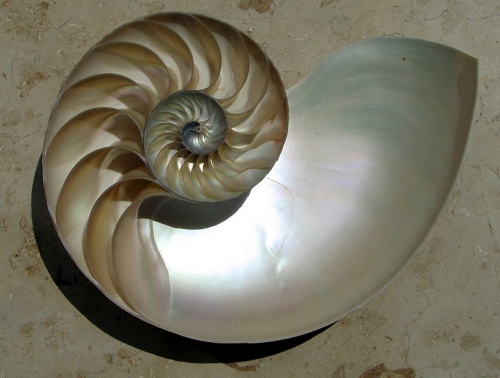|
Had Mayan mathematicians invented the Internet we are certain a great deal more of their civilization's intellectual achievements would have been preserved and glyphs would have been much more accurately translated far faster and with a great deal less difficulty. Mayan Indian mathematicians would also have discovered that Asian Indian mathematicians had begun to explore an arrangement of numbers usually known as the Fibonacci series. Leonardo Pisano Bogollo (1170? -1250?), son of Guglielmo Fibonacci, was an Italian mathematician working mostly in Pisa who, among other contributions, promoted the use of Hindu-Arabic numerals and published a book called Liber Abaci (=The Book of the Abacus) . In the book he points out that a number of interesting effects can be observed if one constructs a series of numbers such that the next number is the sum of the previous two numbers. The classic Fibonacci series is 1, 1, 2, 3, 5, 8,13, 21, 34, 55, 89 .... If one chooses to form ratios by diving a by its predecessor one has 1.000, 2.000, 1.500, 1.667, 1.600, 1.625, 1.616, 1.619, 1.618, 1.618 and so on. The series converges to 1.618033988749895, known to its friends as Φ (the Greek letter phi) which is also one half of the sum of 1 and the square root of five. Also known as the golden ratio, as a pure number, Φ has all sorts of interesting properties: Φ * Φ = 1 + Φ; Φ * Φ * Φ = 1 + 2Φ; Φ * Φ * Φ * Φ = 2 + 3Φ - we are getting the adjacent terms of the series back again. And 1/Φ = Φ - 1. If we start decreasing the power of Φ we get the series again, albeit slightly masked by alternating changes in sign: 2Φ - 3; 5 - 3Φ; 5Φ - 8 ... You could start raising e to the power of Φ (5.04316564335552) or even Φ to the power of Φ (2.17845756791471), but that would be pedantic. There is a seemingly endless collection of properties associated with Φ - we suggest the Fibonacci Journal or the Fibonacci Association or Mario Livio's The Golden Ratio, the story of phi, the world's most astonishing number . Broadway Books, 2002 (includes accounts of people with phi-xations) and Hans Walser's The Golden Section . The Mathematical Association of America, 2001. So what does a theoretical study of rabbits by a 13th century Italian have to do with closing schools in 21st century America. |

A nautilus shell sawn in
half that does NOT form a
Fibonacci spiral.
Notwithstanding, we have
considerable respect for
anything that has been
around for about 500
million years.
half that does NOT form a
Fibonacci spiral.
Notwithstanding, we have
considerable respect for
anything that has been
around for about 500
million years.